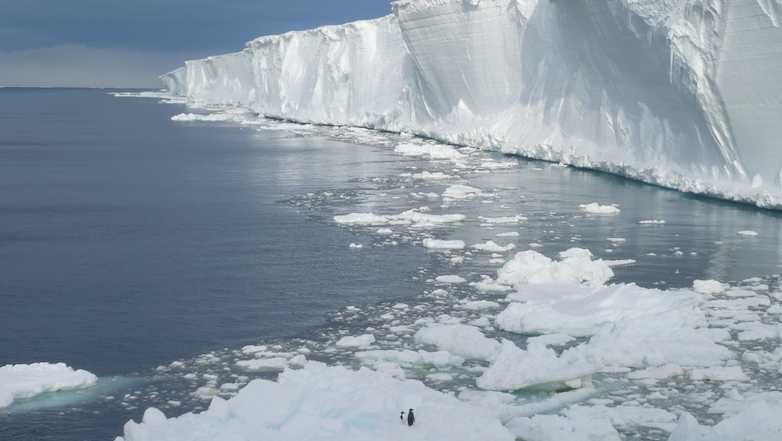Climate and Ocean Dynamics
The world's oceans form a crucial component of the Earth's climate system. Our group investigates the dynamics of the oceans and their interaction with other components of the climate system such as the atmosphere, cryosphere (ice) and biosphere. Our studies aim to enhance our understanding of the influence of the ocean on the variability of the world's climate.
Although our research has a global scope, our more recent focus has been the Southern Ocean and the eastern Pacific.
Southern Ocean
The Southern Ocean provides a major return pathway for deep-ocean water masses to the surface and is therefore a key component of the global meridional overturning circulation. Through this interaction of the deep and surface oceans, the Southern Ocean plays a key role in the global carbon cycle and ocean heat uptake and thus in the global climate.
Within this context, our research group uses a combination of observations and modeling approaches. Guiding questions over the years included the role of sea ice in driving the observed freshening and cooling in the Southern Ocean from 1990 until 2015 (Haumann et al., 2016, Haumann et al., 2020) and the role of zonal asymmetries in driving the uptake and redistribution of excess heat and carbon (Hague et al., in revision). Our primary tool for this work is a regional model (ROMS) coupled to a biogeochemical-ecological component, which takes into account the effects of sea ice (Haumann et al., 2020).
People involved:
Matthias Münnich
Joel Wong
Nicolas Gruber
Key Publications:
Haumann, F. A., Gruber, N., & Münnich, M. (2020). Sea‐ice induced Southern Ocean subsurface warming and surface cooling in a warming climate. AGU Advances, 1, e2019AV000132. external page https://doi.org/10.1029/2019AV000132
Haumann, F. A., Gruber, N., Münnich, M., Frenger, I., & Kern, S. (2016). Sea-ice transport driving Southern Ocean salinity and its recent trends. Nature, 537(7618), 89–92. external page https://doi.org/10.1038/nature19101
Hague, M., M. Münnich, and N. Gruber (in review). Zonally Asymmetric Increase in Southern Ocean Heat Content, Journal of Climate, resubmitted March 2024.
Northeast Pacific
The dynamics of the Northeast Pacific dynamics are largely determined by wind-driven coastal upwelling, with the California Current System (CalCS) being one of the major Eastern Boundary Upwelling Systems (EBUS) on the globe. Due to the upwelling of nutrient-rich deep waters, the CalCS is characterized as a highly productive ecosystem. Thus, the Northeast Pacific and in particular the CalCS represent a key region prone to large-to mesoscale atmosphere-ocean-biogeochemistry interactions.
In order to investigate these three-way interactions and their effects on ocean dynamics and biogeochemistry, we have developed a coupled regional high resolution Earth System Model (ROMSOC; Byrne et al., 2016), consisting of the regional atmospheric Consortium for Small-Scale Modeling (COSMO) model coupled to the Regional Oceanic Modeling System (ROMS). ROMS in turn can be coupled to the Biogeochemical Elemental Cycling (BEC) model. With this complex model setup we are analyzing marine extreme events, their interaction with the lower atmosphere and their impact on lower trophic ecosystems and marine biogeochemistry.
People involved:
Matthias Münnich
Eike Köhn
Nicolas Gruber
Gesa Eirund
Key publications:
Byrne, D., Münnich, M., Frenger, I., Gruber, N. (2016): Mesoscale atmosphere ocean coupling enhances the transfer of wind energy into the ocean. Nat. Comm. 1–8. Doi: 10.1038/ncomms11867
Frischknecht, M., Münnich, M., Gruber, N. (2017): Local atmospheric forcing driving an unexpected California Current System response during the 2015–2016 El Niño. Geophys. Res. Lett. 304–311, 44, doi:10.1002/ 2016GL071316
Frischknecht, M., Münnich, M., Gruber, N. (2015): Remote versus local influence of ENSO on the California Current System, J. Geophys. Res. Oceans, 120, 1353–1374, doi:10.1002/ 2014JC010531
